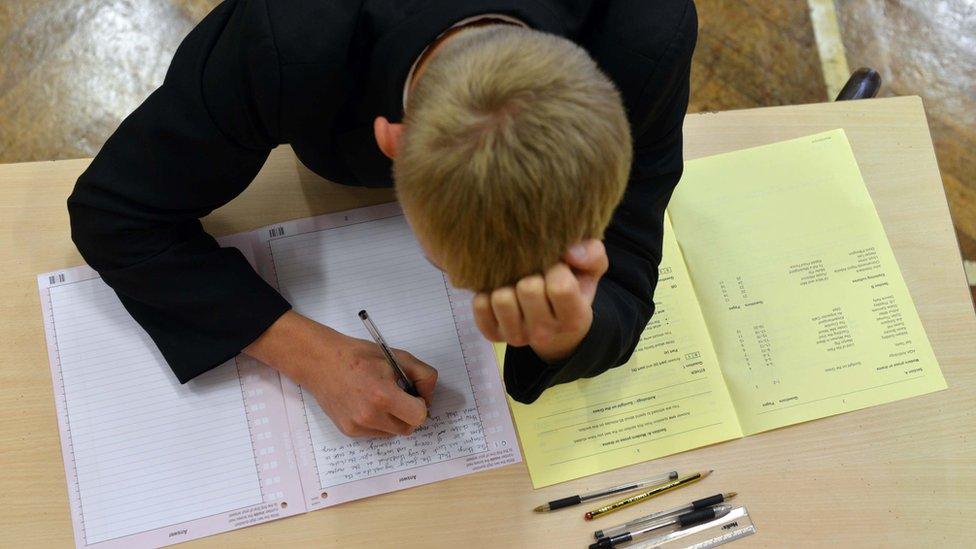Schools exclude pupils' exam results 'to improve league tables place'
- Published
- comments

Some schools are excluding pupils from their overall exam results in order to improve their place "in media-published league tables".
That is one of the key findings of a report by the Education and Training Inspectorate (ETI).
It also said that the number of pupils ruled ineligible to be included in reported exam results was too high.
Pupils can be ruled ineligible to be included in a school's public GCSE and A-Level results for several reasons.
These include illness, welfare issues or because they have been withdrawn from their school.
In 2015-16, about 2,900 pupils in Northern Ireland were judged by schools to be ineligible to be included in their public results data.
This included 1,635 year 12 pupils at GCSE and 1,265 year 14 pupils at A-Level.
That represented 7% of year 12 pupils and 8.8% of year 14 pupils.
In each case, the majority of the pupils withdrawn attended non-grammar schools.
The ETI said that some schools were "inappropriately" ruling pupils ineligible.
"There were instances where pupils deemed as ineligible sat as many as eight examinations at GCSE level or equivalent, resulting in inconsistencies across schools," its report said.
"Clearly in these schools, the exclusion of the pupils from the schools' data improves the headline outcomes attained by the school in public examinations, and consequently in media-published league tables."
The report also said that some schools had ruled a "notably high number of pupils" ineligible.
"The evidence is clear that the inclusion of these pupils in the school's examination results would have impacted adversely on the school's headline performance data and its position in media-published league tables," it reiterated.
The ETI also said, however, that there were also many examples of good practice in schools to help pupils decide which exams to sit.